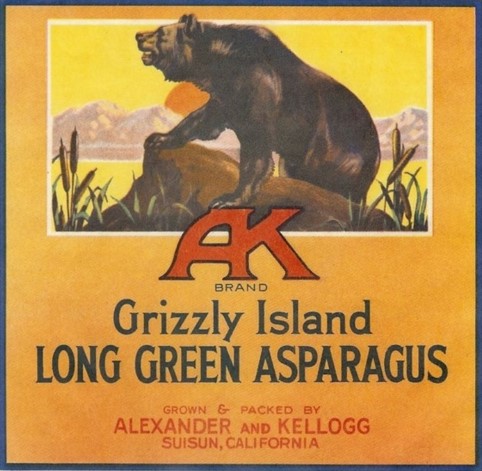An eyewitness account of trapping passenger pigeons in New Jersey in the early 1800s is one of only two publications by the woman who founded one of the premier paleontological museums in America.
In 1927, a short communication was published in the journal The Condor that quoted a letter from John Thomas Waterhouse to his parents back in England. Waterhouse described how the New Jerseyans hunted passenger pigeons using nets and guns.
John Thomas Waterhouse was born in Reading, England, in 1816. He left an apprenticeship with an ironworker to travel to the United States around 1835. After spending some time in Sullivan County, New York, hunting wolves for the bounty payments and dabbling in the fur trade, he then crossed over into northern New Jersey, where he worked as a school teacher in Campgaw, Bergen County for a short time. He was there in March of 1838 when a large flock of passenger pigeons temporarily roosted nearby, enroute to their breeding grounds farther north. The 1927 article quoted the relevant section of the letter in full:
For the last fortnight the air has been almost black with wild pigeons emigrating from the Carolina swamps to more northerly latitudes making their summer quarters in the lake countries. Within ten miles square during the last fortnight I suppose they have shot or netted at least twenty thousand. They fix up a kind of hut in a field made of limbs of trees and buckwheat stubble. They have one or two fliers which they throw out every time a flock passes; the fliers are of the wild pigeon breed usually wintered over or sometimes they take them direct from the flocks, tie their legs to a small piece of twine and throw them up. There is a floor cleared on the ground and buckwheat spread for a bait and [they] have a pigeon on the floor and also a stool pigeon which they move at pleasure by a rope fixed to it in the hut. There is then a net so fixed having a rope that fastens it to a stake in the ground at one end, and soon as ever the pigeons fly down the man in the hut pulls another rope fastened to the net and jerks it over them. They will sometimes net in this way at one haul three or four hundred. Whilst I am writing they are in the adjoining room picking seven pigeons for our breakfast. They were shot this morning at one fire of the gun.”
The estimate of their catch is in line with other counts from the nineteenth century that range from about 100 to 600 birds in one net, although even larger hauls were also recorded.
A few months after posting that letter to London, Waterhouse returned to England. Early the following year, he accompanied his missionary father to Tasmania, and then, in 1851, moved to Hawaii, where he bought large tracts of land. His son, Henry Waterhouse, would later be a member of the Committee of Safety, which organized the overthrow of the Hawaiian monarchy in 1893.
That excerpt of his letter from New Jersey was sent to The Condor from Hawaii by one Annie M. Alexander, who, as the granddaughter of missionaries to Hawaii, probably knew his family. She probably found the letter interesting because she had a trapped a lot of animals herself.
By 1927, Annie Montague Alexander had already accomplished much as a paleontologist, mammologist, philanthropist, and asparagus farmer. Born in Hawaii in 1867 to Samuel Thomas and Martha Cook Alexander, her family, who made their fortune with Hawaiian sugar, later moved to Oakland, California. Annie traveled widely, including bicycling through Europe with her father in 1893. Around 1900 she became interested in paleontology after hearing John C. Merriam lecture at the University of California. Alexander was soon both funding, and participating in, Merriam’s paleontological expeditions in the western United States, including the 1905 Saurian Expedition to Nevada. She also did most of the camp cooking. In 1908, Annie Alexander founded and funded the Museum of Vertebrate Zoology, and in 1921, the Museum of Paleontology, both at the University of California, Berkeley.
She was not only interested in fossils, but also in collecting zoological specimens. In an ill-fated trip to Africa in 1904 to collect both mammal and fossil specimens, her father died after an accident at Victoria Falls. A few years later, she undertook a collecting expedition to Alaska and invited Louise Kellogg, a 1901 Berkeley graduate, to assist her. The two would become lifelong co-workers, friends, and companions, undertaking many expeditions over the next four decades. Late in life, they switched from collecting animals to collecting plants. Alexander and Kellogg also operated an asparagus farm on Grizzly Island, California. Since asparagus is harvested in the spring, they were free to go on expeditions in the summer.
One of Alexander’s last expeditions, at age 80, was to Cabo San Lucas, Mexico, in 1947. Alexander died in 1950. Her note about capturing passenger pigeons in New Jersey, which is less than a page long, is one of only two articles she ever published.
References:
Alexander, Annie M.
1927 A further chronicle of the passenger pigeon and of methods employed in hunting it. The Condor 29:273.
Stein, Barbara R.
2001 On Her Own Terms: Annie Montague Alexander and the Rise of Science in the American West. University of California Press, Berkeley.
